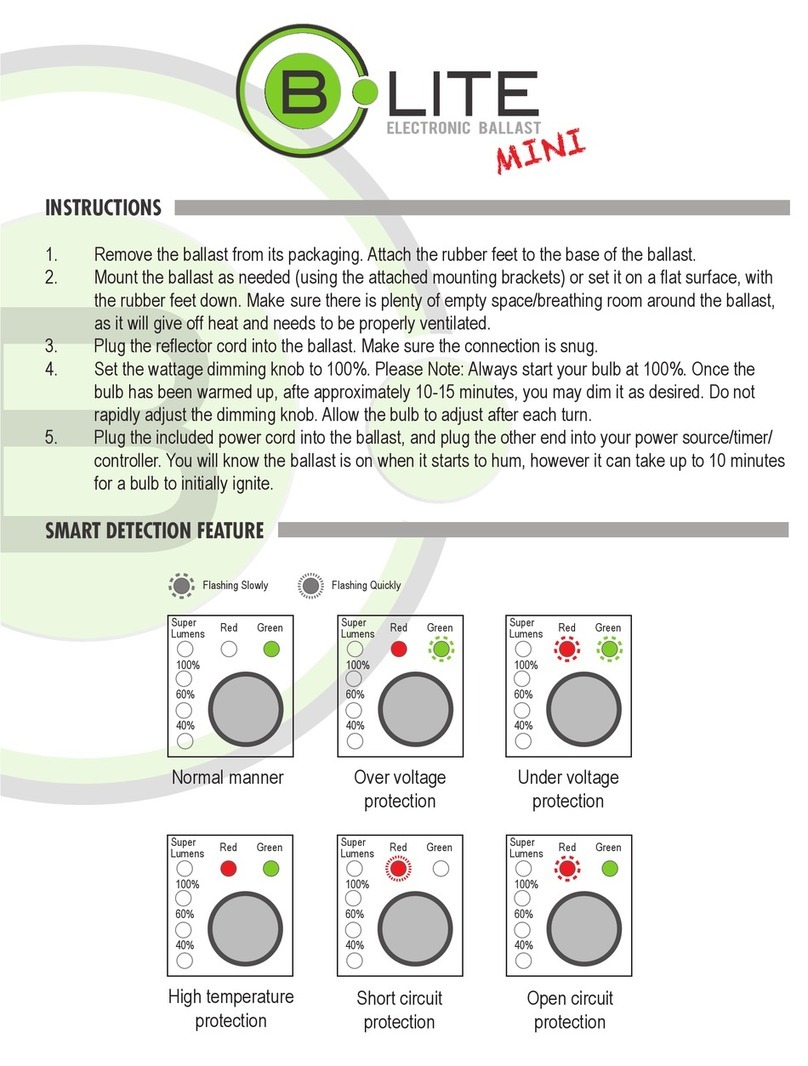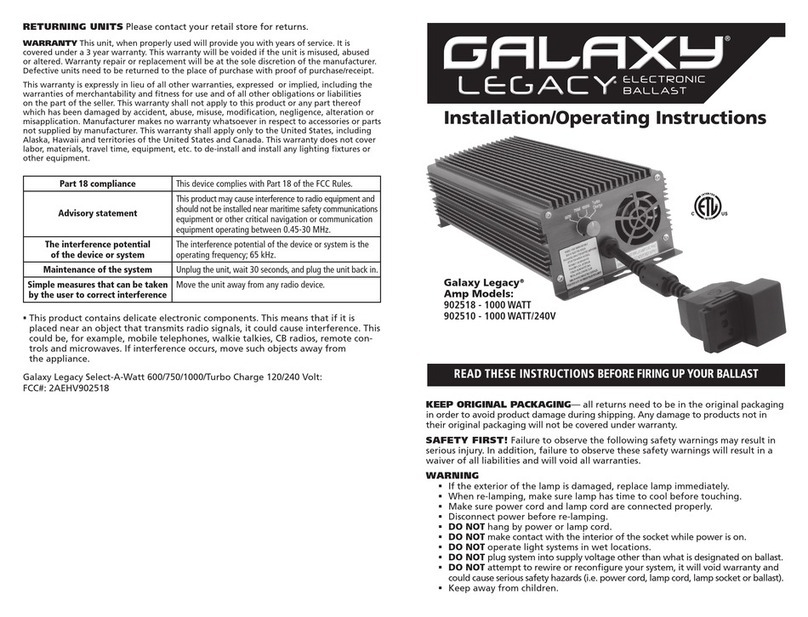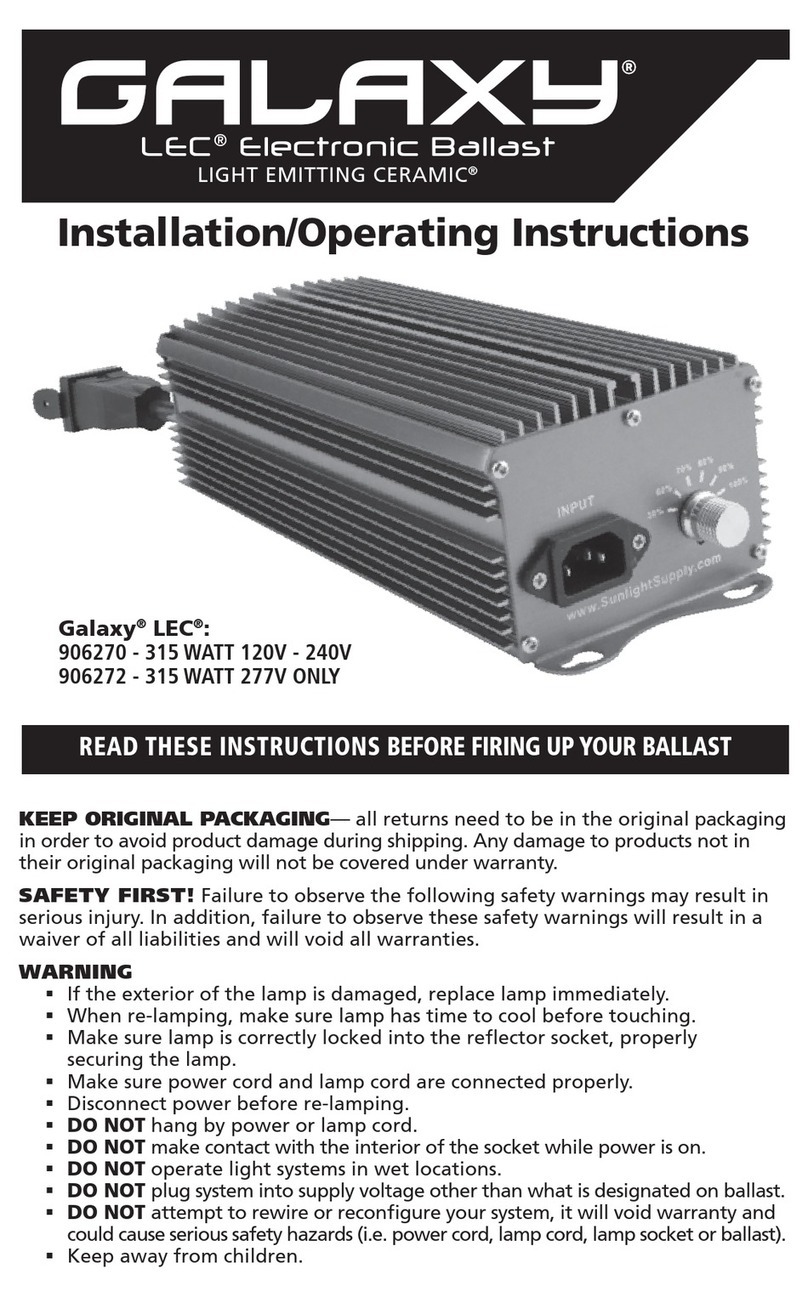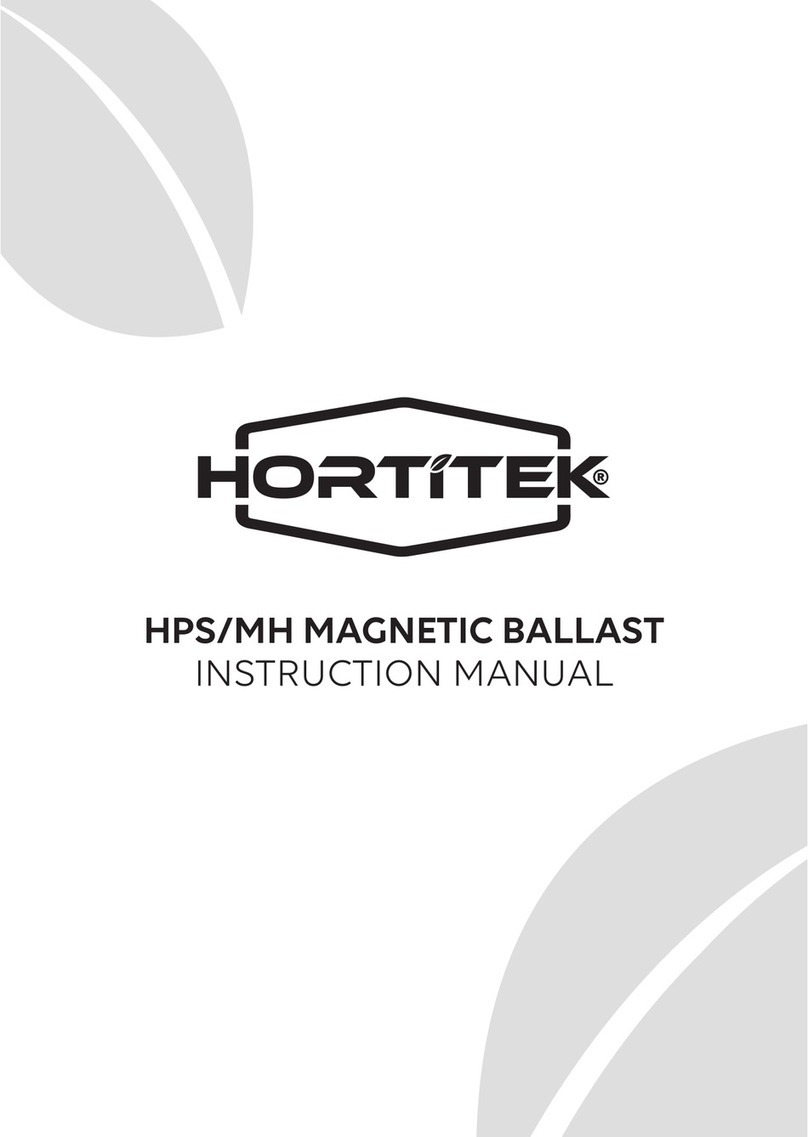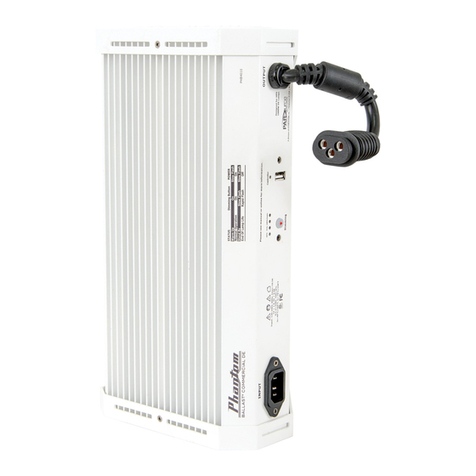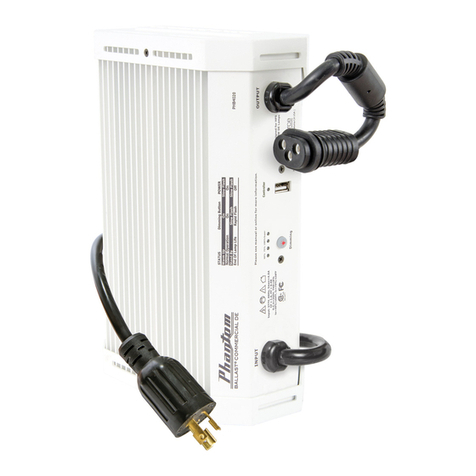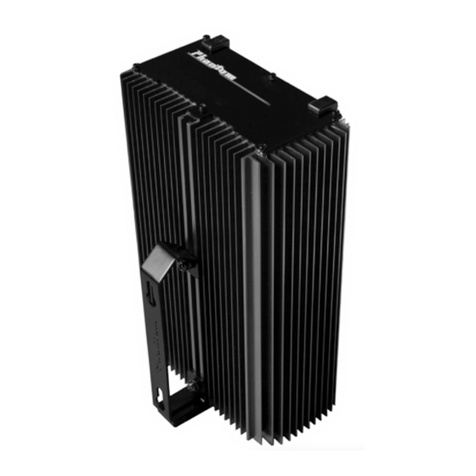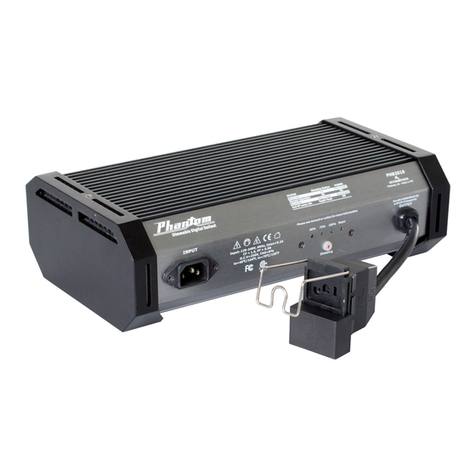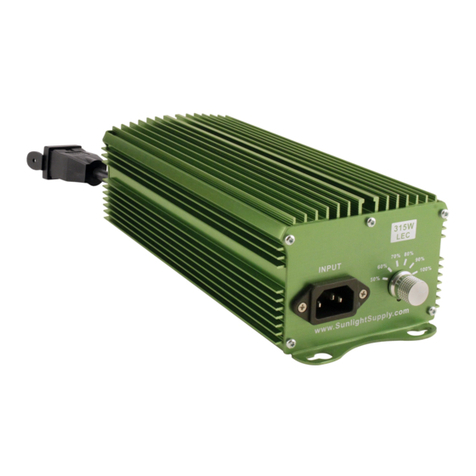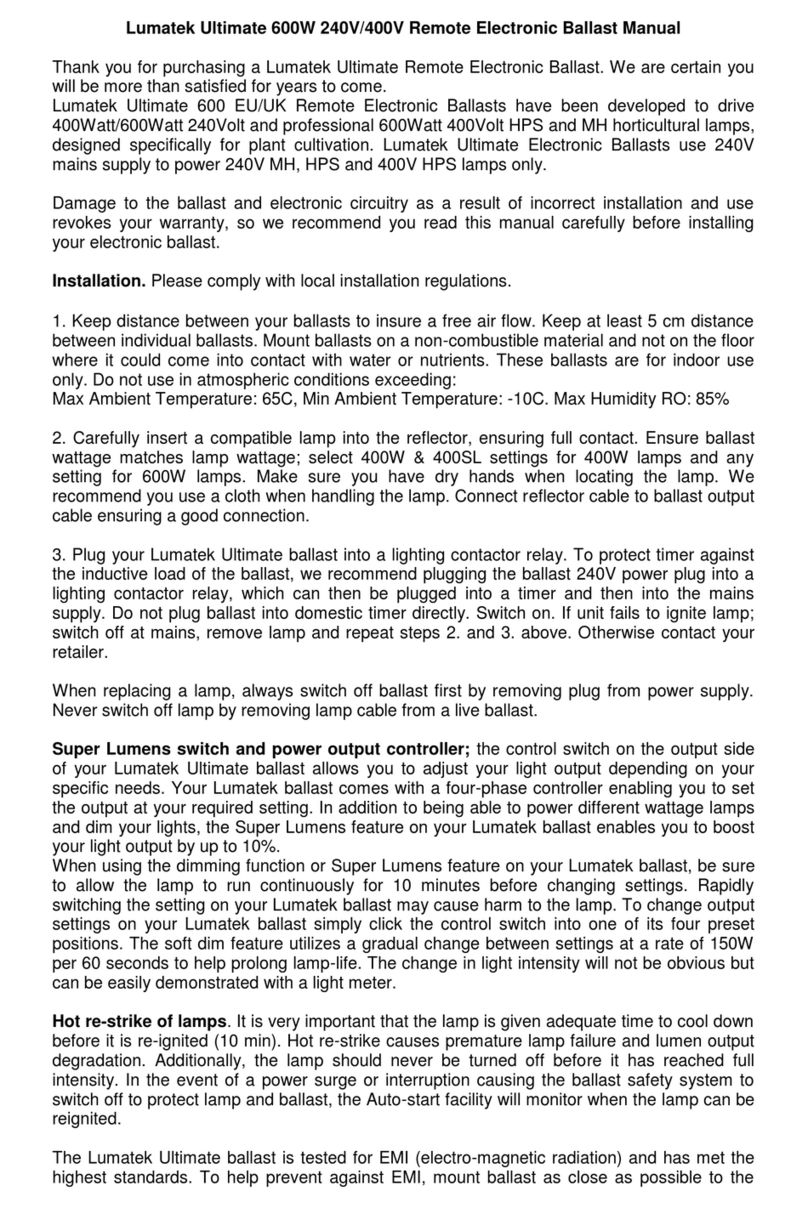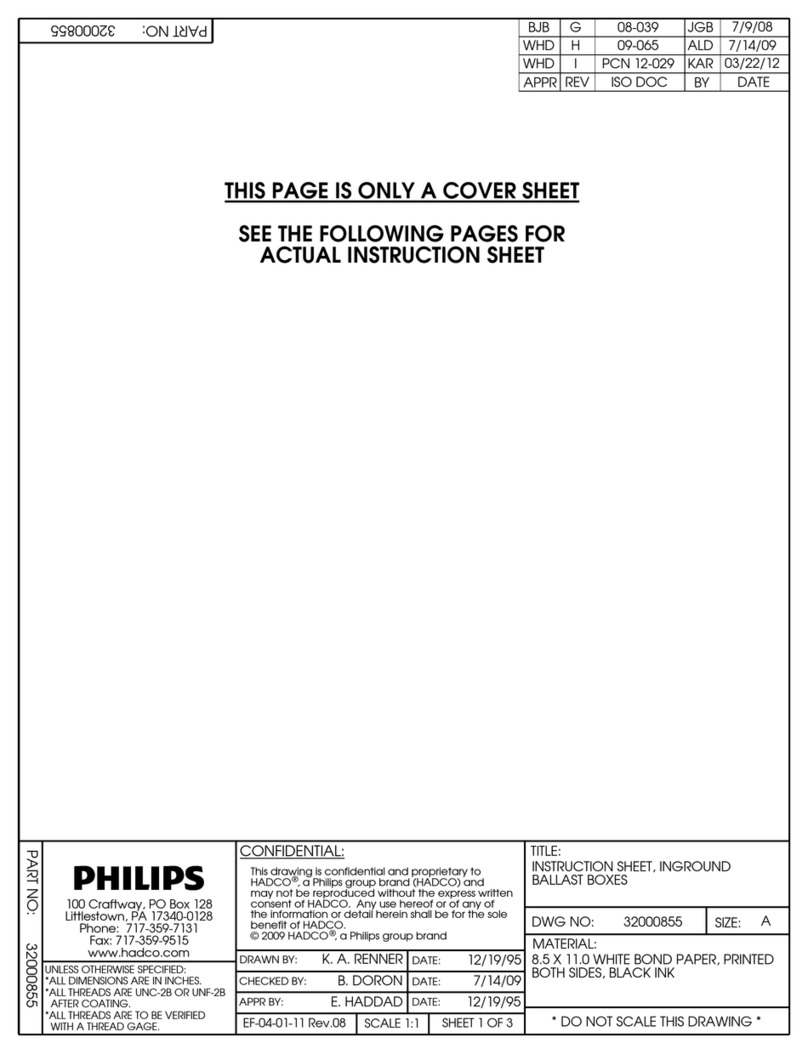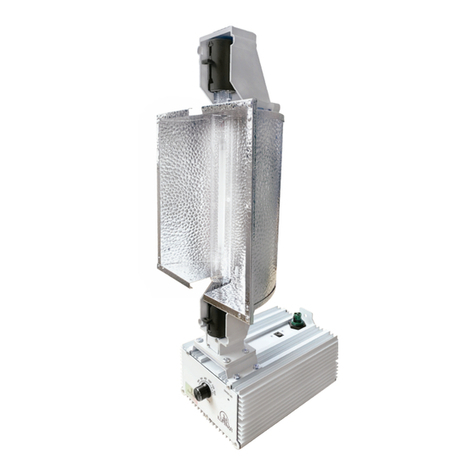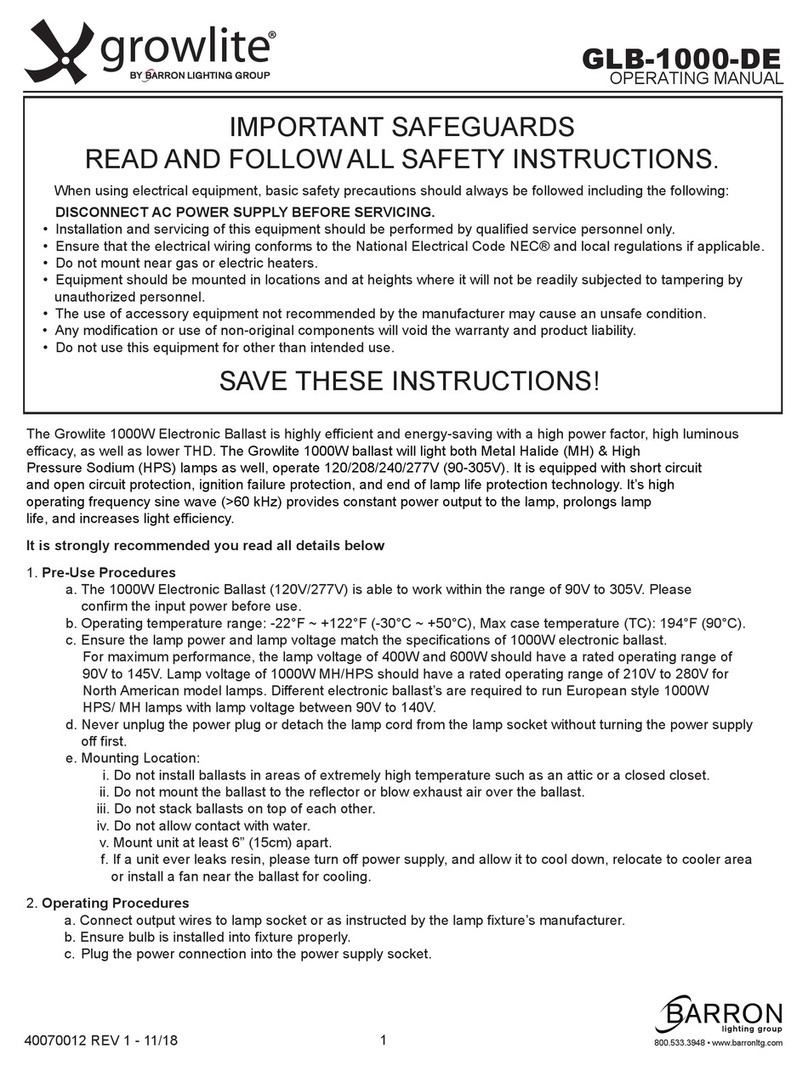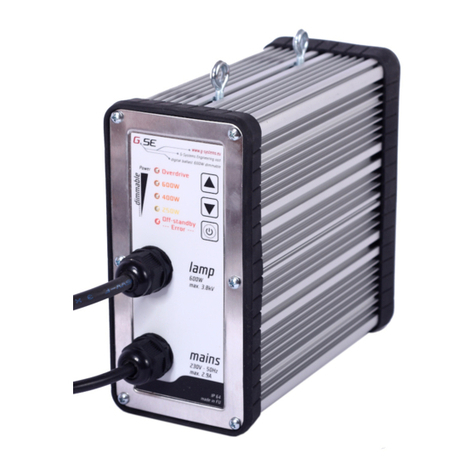
READ AND SAVE INSTRUCTIONS
The Phantom Digital Ballast features state-of-the-art microproces-
sor technology, an extruded aluminum body with cooling ns,
handle and rubber feet, and optional vertical positioning or hanging for
even more efcient cooling of the internal components. D-Models in-
corporate a dimming button with LED indicators to provide for energy
- saving dimmability with both HPS & MH lamps. These instructions
are based on operation of standard HPS & MH lamps. Supply power
is based on typical commercial or residential 120/240V, 60Hz input.
This product must be used with the appropriate wattage recommended
HPS/MH lamps to achieve the highest efciency, safety, luminosity,
and to guarantee proper operation.
Warnings:
This manual contains important safety measures that should be fol-
lowed during the installation and maintenance of the product. Please
read it thoroughly before installing and operating this product.
1. This digital ballast is designed specically for HPS & MH lamp
operation.
2. This ballast is for indoor use only. Avoid exposure to excessive
heat or contact with liquids.
3. This ballast does not rely on the luminance enclosure for protec-
tion against accidental contact with live parts.
4. To ensure proper lamp ignition, the lamp cord should not be
longer than 30 feet.
5. Do not install or otherwise perform any maintenance, lamp
changes, or other modications while the ballast is connected to
the power supply.
6. Please contact the retailer for service if the ballast does not work
after conrming the power connection, output connection, bulb
operation and utilizing the Reset function.
7. Do not try to open the ballast. Opening the ballast will void the
warranty.
2
ALWAYS DISCONNECT POWER BEFORE MOVING
UNIT, CHANGING LAMPS, ETC.
